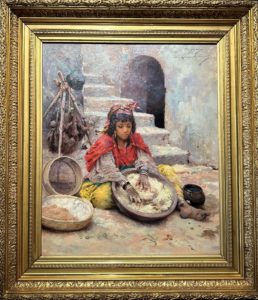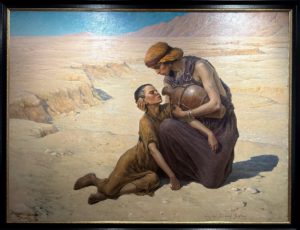The Pont-Aven Museum retraces this "call from afar" of travelling artists. From the Belle Epoque to the Second World War, this exhibition follows the itineraries of some thirty artists and photographers who took to the road, from the African continent to the Orient, far from Western Europe.
This "call from afar" began at the end of the 19th century, when freedom of expression for the press was asserted in France, giving women artists greater visibility, particularly through newspapers created and developed by women (such as La Citoyenne or La Fronde).
By the end of the 19th century, a new context was emerging, that of the first feminist movements, which encouraged women to assert themselves outside the domestic sphere. The academic training provided at the École des Beaux-Arts or private academies enabled women artists to acquire professional status, exhibit their work, obtain travel grants and commissions for shipping companies and for universal and colonial exhibitions.
In the 1920s, it was the territories that invited artists, from equatorial Africa to Madagascar and the Indochinese peninsula. These included Marcelle Ackein, Jeanne Thil, Anna Quinquaud, Alix Aymé and Monique Cras, whose works are featured in the exhibition.
The routes taken by these artists follow the map of European hegemonic expansion, and more specifically that of French colonisation under the Third Republic.
The way in which women artists look at things is different from that of their male counterparts, and the presence of many portraits indicates their search for a close relationship with the people they meet, particularly women in their daily lives.
Exhibition "Artistes voyageuses, l'appel des lointains, 1880-1944" at the Musée de Pont-Aven until 5 November 2023 (in July and August, the museum is open every day).





